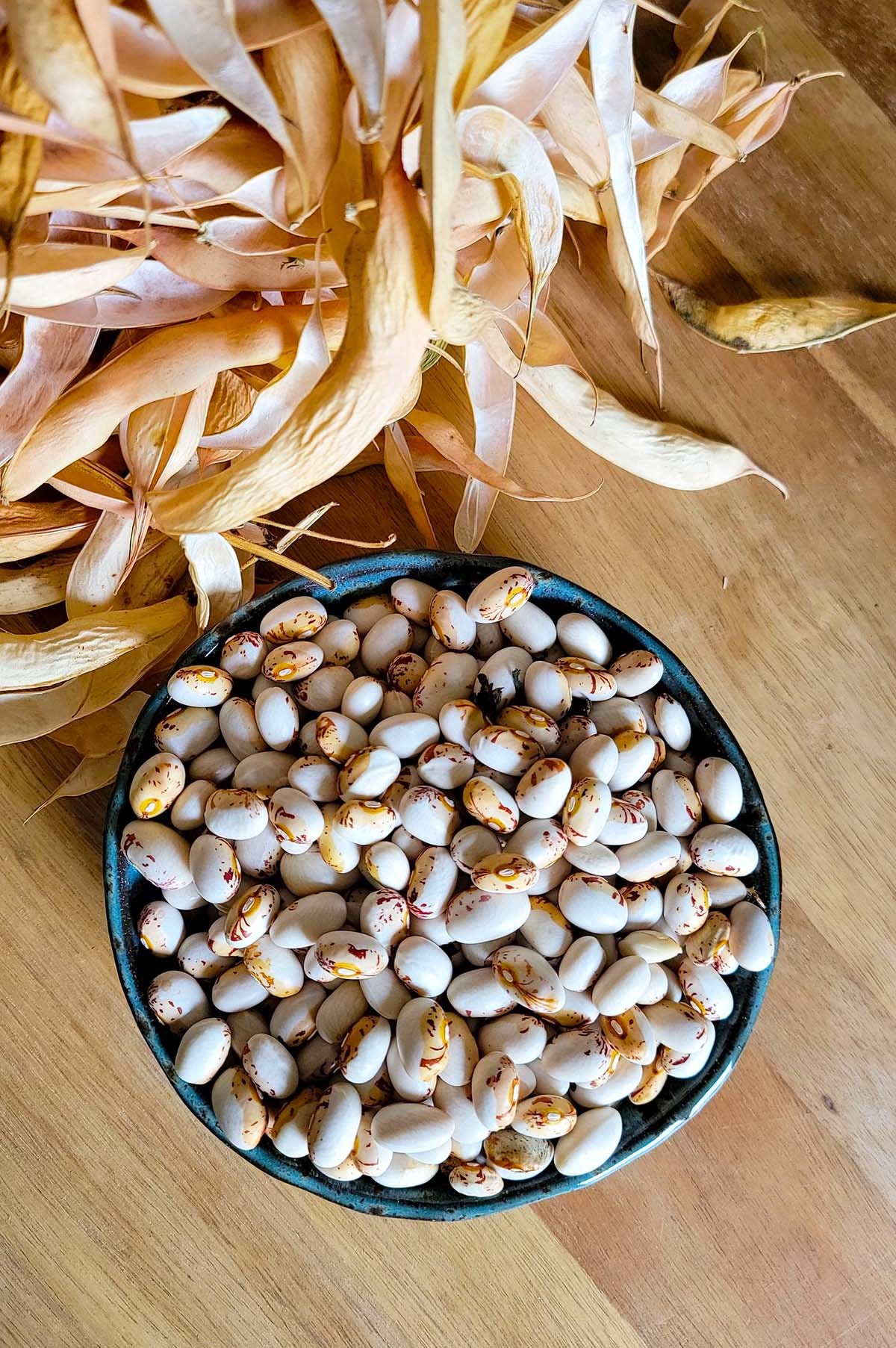Saving Seeds
A small act of rebellion in this modern world
Every few days, I walk into my little garden and pluck dry Hidatsa beans off of aging, tired vines. It’s October. Our growing season wanes. But seed saving season is upon us. Each seed I put in a jar is a promise I don’t have to purchase next spring, a small act of independence in a world hell bent on getting us to buy more and more and more.
Seeds connect seasons the way stories connect people — what we save and share outlives a single summer. Sometimes a single lifetime. Sometimes many.
I have been saving seeds for more than 30 years. All kinds, from tomatoes and herbs to beans — where the seed is the harvest — to esoteric seeds like lomatium, prairie turnips and in my youth, maybe even a cannabis seed or three.
Many seeds, like the beans, are the harvest, or are an important side hustle. Cilantro is a great example of this. Cilantro seed is coriander, and if you let it go all the way, the birds will eat some, but many will scatter and — hey, presto! — you’ll have lots of new, volunteer cilantro plants. (I wrote about volunteers here.)
Dill, parsley, fennel, and most of the other apiaceae family plants are similar in that their seeds are a spice. Some, like caraway, we really only use the seeds from.
Saving seeds requires a bit of discipline, and a willingness to flout neighborhood norms. First, you must allow your plants to live their lives fully, giving them the space and time to flourish in the way Nature intended. You cannot rush a seed’s development. She’ll ripen at her own pace, in her own way. Let her, even if it may leave your yard less than asthetically perfect for a time. Perfection is the enemy of real growth, which is usually messy.
Only when your seeds are firm and dry and ready should you pluck them. Although in some cases, you do need to nurture them in the final stretch. After all, everyone needs a little support sometimes. This is the case with those Hidatsa beans. I will bring them inside when the pods are yellow and taut, but still leathery, because the squirrels and rabbits will maraud them if I don’t. They finish up, safe and happy, in my kitchen, perched on the counter.
Another maxim in the art of seed saving is to stay true to your desires: Many plants will cross with each other, which in most cases results in odd, often not-so-great progeny the following year. Squash, beans, tomatoes and to some extent peppers are known for this. So is corn.
That brings me to my stubborn refusal to accept as normal the way multinational corporations broke the ancient cycle of seed saving. They have foisted upon us crop seeds — mostly corn — manipulated with a “terminator gene” that will not let the seed germinate. I understand that these companies want to protect the investments they’ve made on disease- and pest-resistant varieties, but violating the cycle of seed saving among those who make a living at this is diabolical. All this is not new news, but it still sticks in my craw…
Anyway, if you want to save seed for the future, choose a variety and stick with it — at least for a year. Unless you are still unsure of your desires. In that case, my advice is to plant lots of varieties at first, see which ones make you swoony, then start saving the following year. I may do that with winter squash next year.
Once you do find your heart’s desire, you’ll find that you change each other over the years. In Sacramento, I grew a pale yellow tepary bean year after year, choosing and replanting only the fattest, most orangey beans. I forsook every other tepary bean in my devotion, until one year, I was rewarded with a wondrous crop of fat, orange beans.
I don’t save every seed from every plant in my garden. There are many good and wonderful small companies that sell seed. Hell, I buy from lots of them. But there is something liberating about, say, collecting seeds from your four o’clocks in late afternoon, tucking them in an envelope to rest over the long winter, then opening them up to plant when the promise of spring is in the air.
Giving seeds holds a special place in my heart, too. To give someone seeds is to say: I believe in your seasons. And I trust you’ll find joy in bringing them to life in your own space, in your own way.
In the garden as in life, tomorrow’s harvest begins with what we set aside today. No one else can do that work for us. To save a seed is to hold faith that there will be another season — new, alive, green, moving forward into whatever comes next.




Your writing always brings a smile to my face. The beautiful details that are so easy to visualize, paint the story you are telling, so well. Thank you.
I saved my first seeds, carrots, a few years back after forgetting a rogue plant at the back of the garden. It bloomed into a beautiful head of white flowers then looked downright awful for a month or so. But I was able to gather thousands of seeds and planted the offspring of that carrot for several years. I was giddy with the idea that nature was gifting me so much. And for what? My laziness at gardening? Thanks again for reminding us about the cycles of the seasons and all the bounty we receive from Mother Earth.